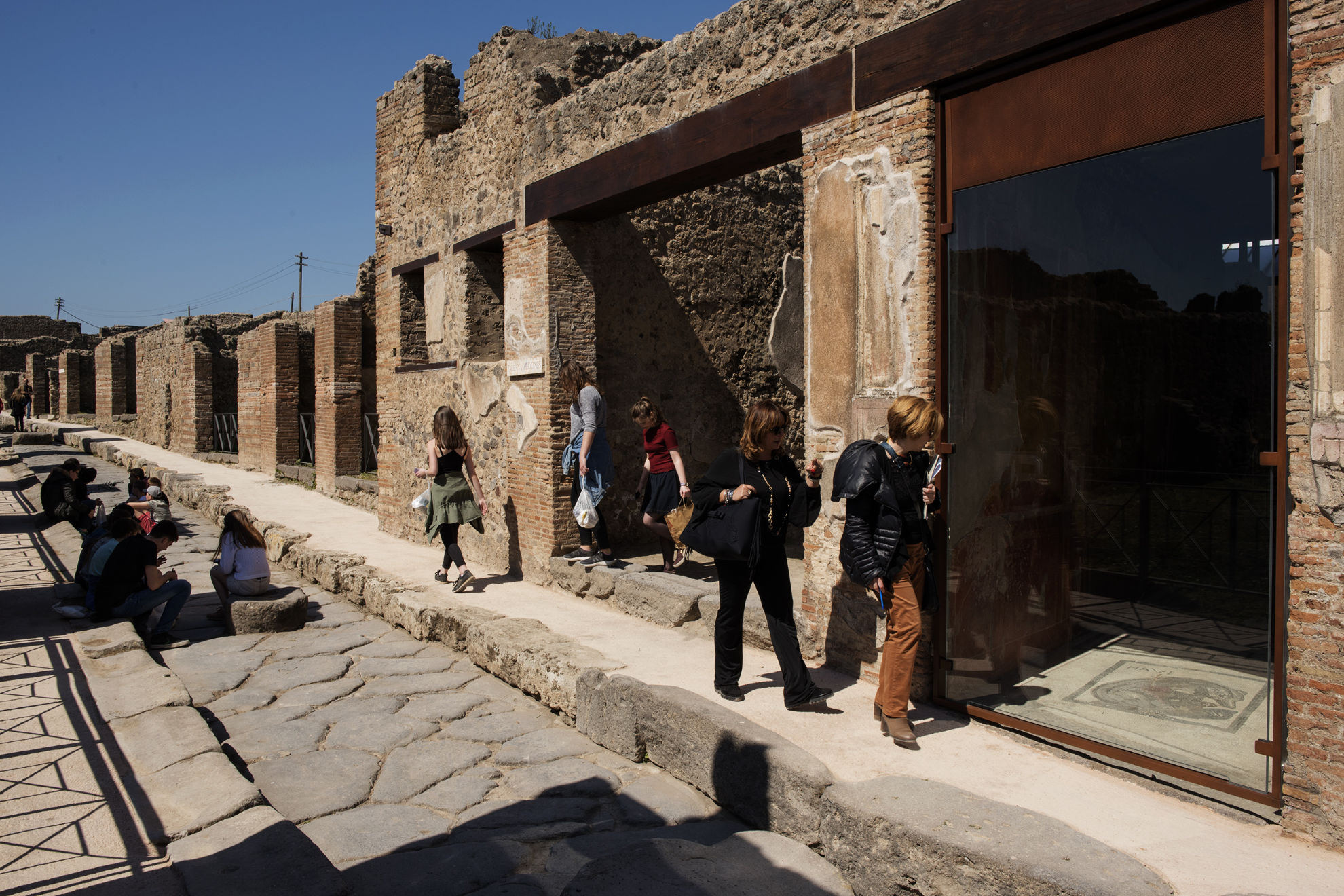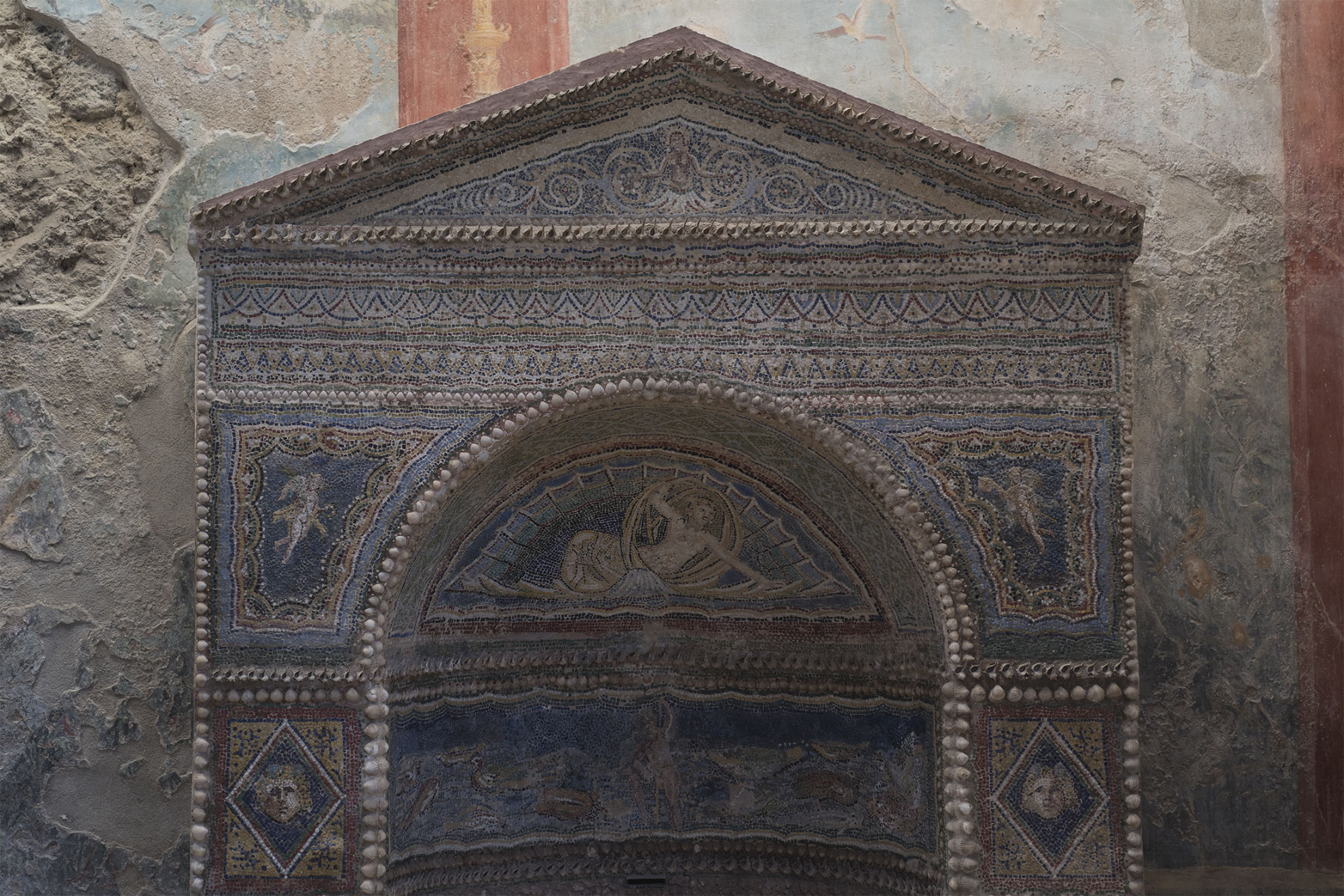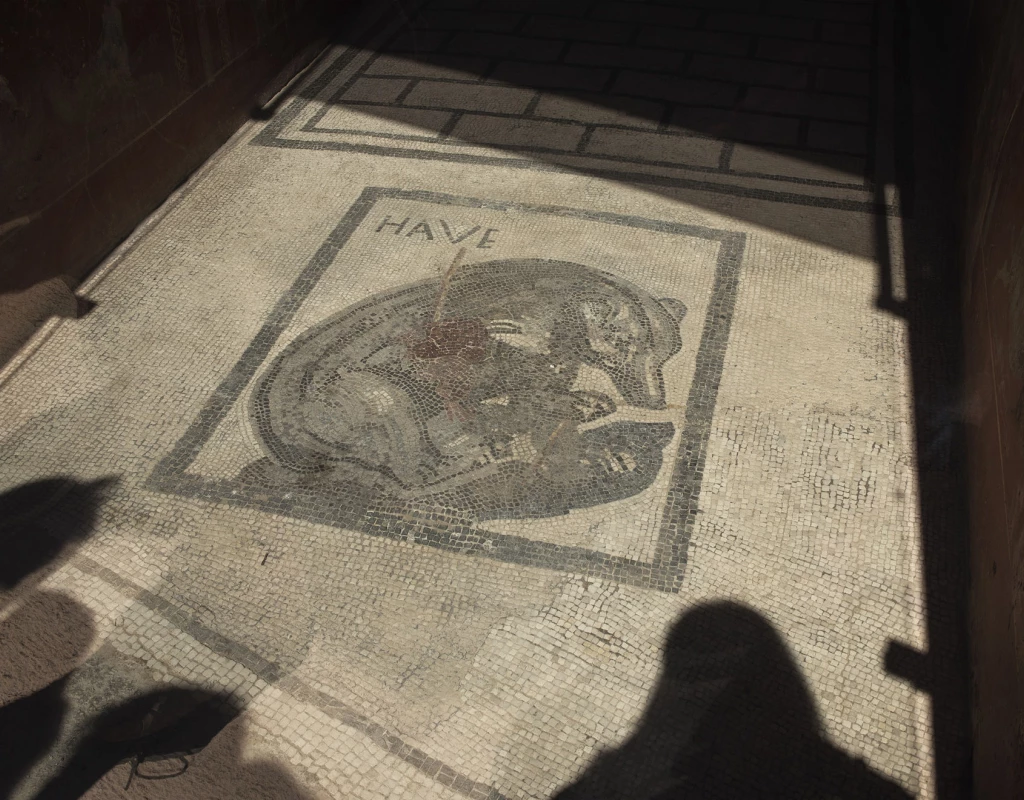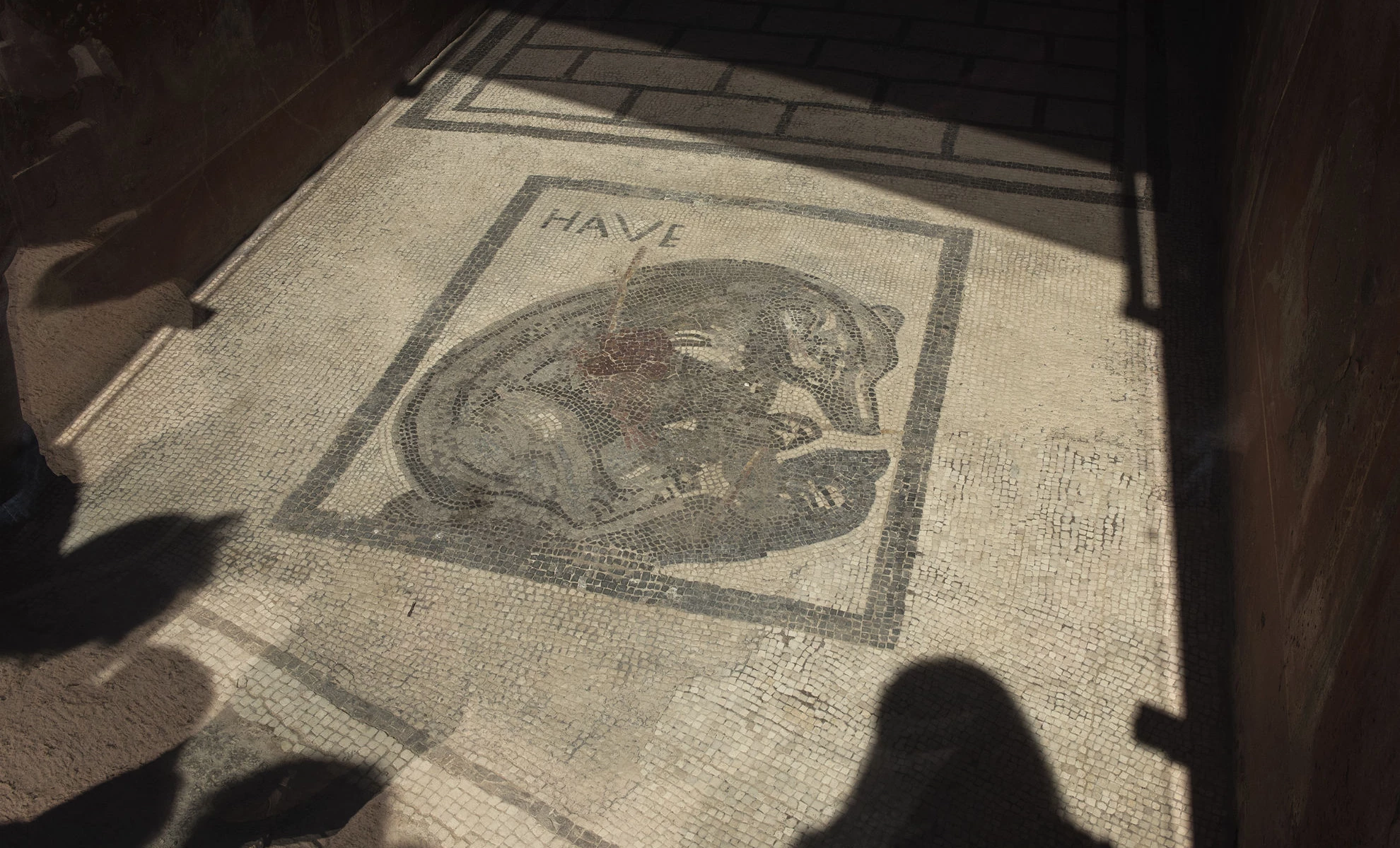In Pompeii the domus have different names that range from the traditional Giulia Felice, Octavius Quartio to the “Venus in the shell” or “the tragic poet’s” or “the Faun’s”. They are bizarre names that intrigue us.
They were attributed to the buildings on the basis of the themes of the decorations or on the objects found inside them. To find out the reason for the names you often have to enter the remains of the villas, at least going beyond the atrium.
In some cases, however, it is enough to look out on the threshold. As for the house of the wounded bear. A large bear, folded in on itself, has a deep bleeding wound; following the red of the wound with your eyes, you can see the writing HAVE at the top left.
Ph. Anna Monaco

A truly original welcome! Not the classic cave canem, which is also found in various forms in the Pompeian domus, but a mosaic panel that leaves us a little perplexed. In fact, the image of the wounded bear is one of the many apotropaic ones of the ancient world, very common in Pompeii, used to keep adversity away from the house.
Ph. Anna Monaco

After the entrance, the domus of the 1st century AD. reveals a surprising atrium, not very large but embellished with geometric mosaics with black and white tiles and ribbon-shaped ones around the basin of the impluvium. The decorations recovered their ancient splendor thanks to recent restorations and thanks to the transparent walkways you have the impression of stepping on these floors, without damaging them.
Like all the domus of Pompeii, this too has its point of value in the garden, and it does not matter that the space is limited: painting is able to expand reality. On the walls, in fact, a garden with rich vegetation and animals is designed. Among the latter, a boar and a wolf, represented as they face each other, stand out for their size and realism.
Ph. Anna Monaco

In the small garden the fountain is decorated in mosaic with brightly colored glass tiles; the theme of water is a must, and immediately brings to mind the mythological characters of Neptune and Venus. The latter lies in a shell and is surrounded by real shells, used to decorate the fountain and give the impression of a small cave; below, surrounded by fish, is the god of the sea.
Surprising is not only the use of colors, but also the abundance of details through such small tiles. A simple fountain is capable of evoking distant and immense seas.
Ph. Anna Monaco

The guest of the domus cannot be satisfied if he does not visit the triclinium painted with refined decorative motifs and two small “paintings” with Narcissus and Danae with the little Perseus. Small, welcoming and refined, this domus is worth entering, even if a bear welcomes you.

